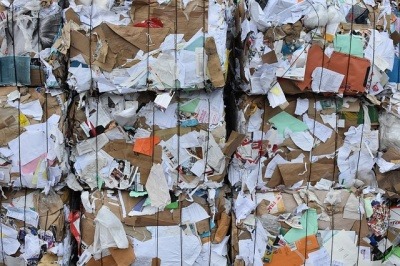Indian Government to tighten restrictions on the import of mixed papers
The Indian Government is set to enforce restrictions on imports of mixed paper in a crackdown on the import of contaminated and illegal waste.
According to Indian Government documents seen by Resource, the government will be implementing a one per cent contamination limit for all mixed paper imports, with five bales of mixed paper to be inspected randomly in every container arriving in India.
 The documents state that imports must contain paper waste only and should not be co-mingled with bio-medical waste, municipal waste or sewage waste. The new restrictions are being implemented due to incidents of the mixing of hazardous and plastic waste with imports of mixed papers being reported.
The documents state that imports must contain paper waste only and should not be co-mingled with bio-medical waste, municipal waste or sewage waste. The new restrictions are being implemented due to incidents of the mixing of hazardous and plastic waste with imports of mixed papers being reported.
The restrictions will bring India’s import restrictions on mixed papers almost in line with China’s, which banned the import of mixed papers and set a 0.5 per cent contamination limit for all other recylable fibres at the start of 2018 in a similar crackdown on the illegal import of waste.
Commenting on India’s new restrictions, Simon Ellin, Chief Executive of the Recycling Association, said: “We understand that India is now implementing a one per cent non-fibre tolerance on paper, which has been in place for 10 years anyway but has never been enforced. They are also inspecting five bales in every container when it arrives. We also believe that the banning of mixed [papers] in India is pretty much an inevitability too.
“As a result, two major exporters have pulled out of the Indian market at least temporarily until it is absolutely clear how everything will be implemented – too many risks [are] attached to the market at the moment.”
China’s waste restrictions, which applied a complete ban to unsorted mixed paper and post-consumer plastics, sent shockwaves through the recycling world and saw exporters scramble for alternative markets for plastics and paper and cardboard.
While much of the concern over waste exports has focused on plastic, with many countries introducing restrictions after being overwhelmed by the flood of plastic imports, particularly in Southeast Asia and including India earlier this year, the problems facing paper and cardboard have had less of an impact on the public consciousness.
The problems are there to see, however, with the European paper recycling rate falling in 2019 partly due to tightening export markets, with Indonesia recently banning the import of recovered paper, while export prices for mixed papers and cardboard continue to fall.
The restrictions will increase pressure on local authorities and materials recycling facilities (MRFs) to clean up material streams, with strict contamination limits meaning collected material will need to be of the highest quality to be accepted by importing countries and to attract a good market price.
“It brings it all back to what I am constantly saying, which is where is all of this material going to go?” continued Ellin. “I think we have got so obsessed and focused on plastics that we have taken our eye off the fibre ball. Prices are at their lowest since the 1980s and with mixed at -£70 [per tonne] in some places, councils must be looking nervously over their shoulders. As 60 per cent plus net exporters of fibre from the UK, government needs to take urgent action.”









